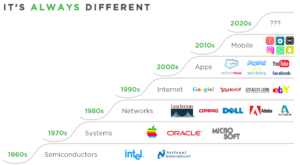The fall of the greats – The Blockbuster Story
The fall of the greats – The Blockbuster Story
By Victor Moran
If someone had told me back in the early 2000’s that Blockbuster and Toys R’Us that by 2018 both companies would be closing all their stores I would have laughed. I remember a job fair at my campus where lines of colleague undergrads were in line to work for a strong brand with great career opportunities on a very attractive industry. Some of my millennial classmates might not even be aware that at one point of time, these two giants were the face of their respective industries, they own them and now they are gone. Given this is a small blog post, the focus will be on the Blockbuster case however the similarities are arguably as close as it gets.
Some history, back in 1989, a Blockbuster store was being opened every 17 hours, by 2004, there were over 9,000 Blockbuster outlets (1). However by the end of the 2000s, these were closing at the same rate, why? Two major disruptors came into play, the first one was Redbox who started in 2002 with the “kiosk” concept located at very convenient locations offering a small selection of 630 DVDs with over 23,000 of them across the country (2). The 2nd one was Netflix which was founded in 1997 offering first a monthly subscription model with actual DVDs and migrating in 2007 to streaming services (3).
What caused Blockbuster’s debacle? you could argue their business model never adapted to the new technologies, they protected too much their customer base as it was or maybe it was overall their lack of vision. Back in 2000, Reed Hastings who is one of the two founders of Netflix visited Blockbuster to make a sales pitch to them, “The idea was that Netflix would run Blockbuster’s brand online and Antioco’s firm would promote Netflix in its stores. Hastings got laughed out of the room.” (4). The truth is at one point, Antioco’s acknowledged that his business model had to evolve and went for the elimination of the late penalties ($200M revenue) and the investment of their e-business model (+$200M investment) however the board didn’t back his plan and eventually in 2006 he was gone, the company moved back to their previous business model and we all know what happened from there (5). It could be argued that if Antioco’s plan would have been implemented the history would be totally different. Was Blockbuster equipped with the corporate structure, vision and commitment to drive their e-business is still a question however they had the advantage of knowing the industry, the customer and the brand.

Overall, Netflix is currently a $28 billion dollar company and Blockbuster is gone. Antioco is considered a fool for not evolving let alone passing the Netflix offer while Hastings is considered a genius. The question left to answer is who will be the next fool and who will be the next genius. These types of stories are being replicated over and over at different scale sizes. From small stores that are going out of business due to Amazon and Walmart to the shopping malls having less people actually leaving the stores with merchandise. The future will be for those visionaries who are willing to make smart, risky decisions in uncertain times. Carl Eschenbach presented the following slide in his lecture at Stanford on June 29th(6), the players are changing faster than ever, the future is on the software, on the AI, the Saas, not on hardware and brick and mortar. How can traditional CEO’s stay up to date and be ahead of their times? It is hard to say, staying informed is one way (taking the MS&E238 class is an excellent start). Promoting creativity and facilitating it within their organizations is another one.

Reference:
- https://www.washingtonpost.com/news/business/wp/2018/07/14/why-are-you-still-here-inside-the-last-blockbuster-left-in-america/?noredirect=on&utm_term=.851ffa3b9221
- https://www.slideshare.net/sugeladi/history-of-redbox
- https://www.cnn.com/2014/07/21/showbiz/gallery/netflix-history/index.html
- https://www.forbes.com/sites/gregsatell/2014/09/05/a-look-back-at-why-blockbuster-really-failed-and-why-it-didnt-have-to/#64b99b01d64a
- https://hbr.org/2011/04/how-i-did-it-blockbusters-former-ceo-on-sparring-with-an-activist-shareholder
- Carl Eschenbach MS&E238 lecture at Stanford on June 29th,2018
2 comments on “The fall of the greats – The Blockbuster Story”
Comments are closed.


Absolutely! We keep listening to the same story over and over again. A giant, a company which was the face of an industry a few decades ago, going to bankruptcy because they are not able to adapt to the constant changes. That is why the world’s largest companies in terms of market value went from energy, retail, tobacco, beverages business… to mostly tech companies. The latter were founded to adapt to these changes, to diversify their businesses, to study behavior and satisfy the customer’s needs. But then again, when they cease to do this, they will be destroyed by others who would.
This was a jolly good read ! I Think the moral of this story was, they didn’t think beyond their Business Model. There was only one way to think about their business going forward – Digital transformation. Netflix saw this opportunity and killed blockbuster.